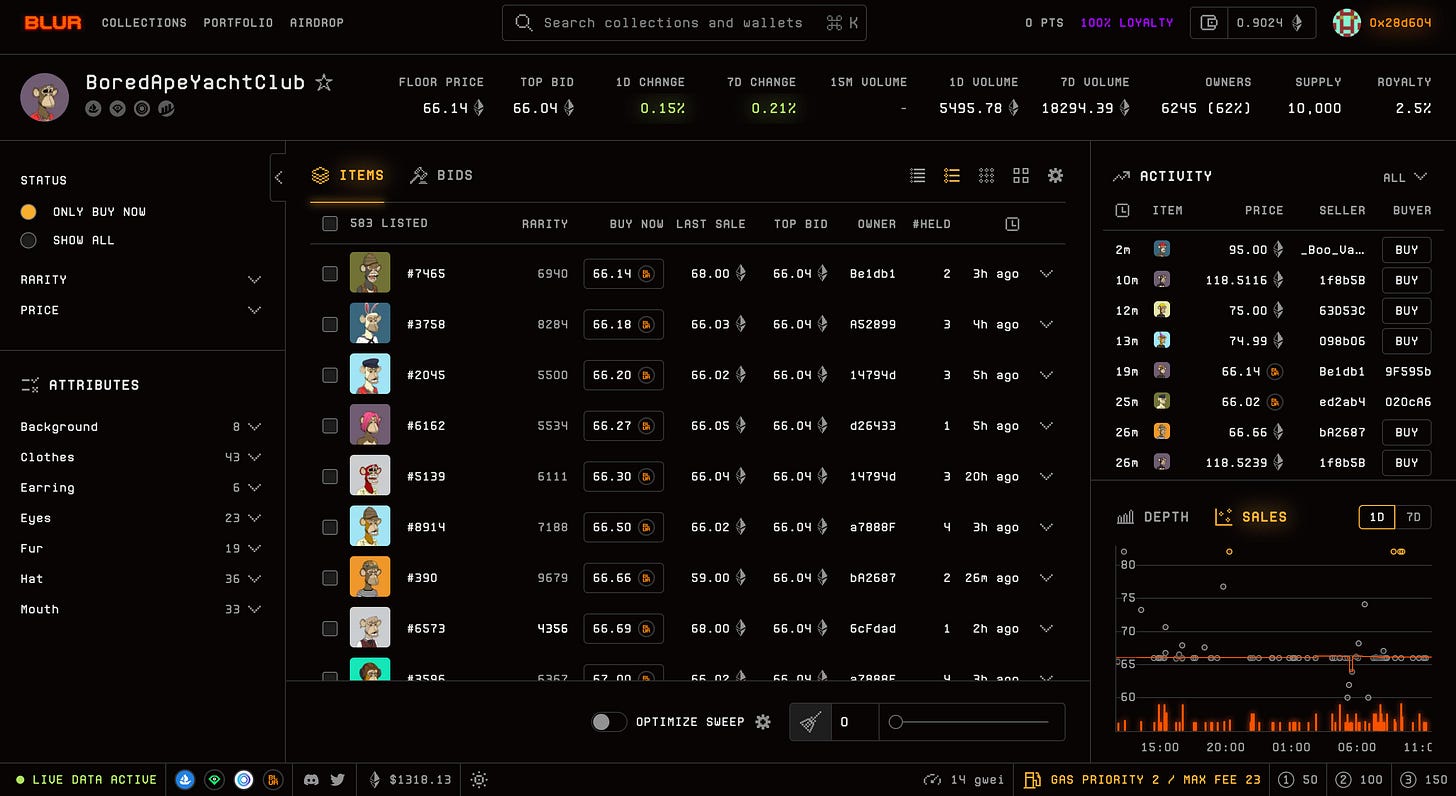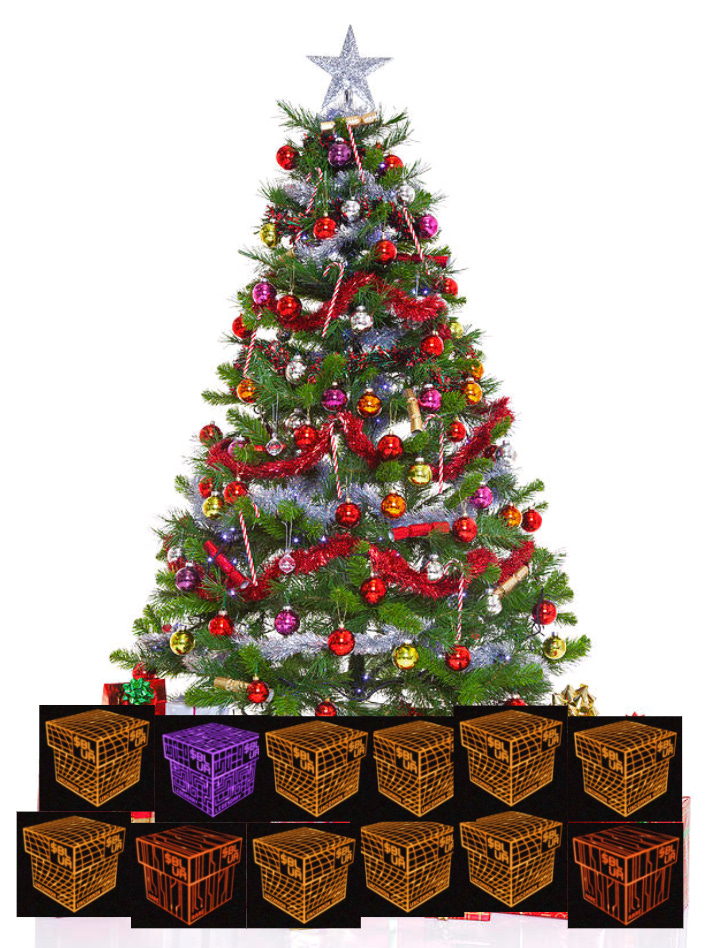Today’s piece is brought to you by Talently!
Talently is an on-chain version of LinkedIn that helps:
Talent showcase their on-chain accomplishments
Recruiters find web3 talent
Want to learn more about Talently? Check out my piece on them here.
Airdrops are common in web3. One recent airdrop was with Uniswap the launch of their NFT marketplace, providing qualified users $300 in USDC.
Another one that has held the attention of the community over the past few months has been with Blur, a new marketplace aggregator tool.
Blur caters to more experienced NFT traders with its default dark-mode, built-in analytics tools, sweeping (buying multiple NFTs at once) features, and more.
Since the public launch on October 19th, Blur has gone toe to toe with Opensea and has taken the #1 spot for Ethereum marketplaces over some stretches. Blur is the orange bar below.
What has made the Blur Airdrop process unique compared to many airdrops in the past? How has this led to more adoption from the NFT community leading to more volume on the marketplace?
Social presence
A common best practice for web3 native companies, Blur has been active in partnering with various communities in the ecosystem. They also have a list of notable names that have been a part of their fundraising round.

The list of investors is impressive and with that comes their respective social clout. At the time of this writing, the Twitter following of the above investor accounts is 2+ million followers combined.
Marketing is a little easier when you have a dedicated audience of that size 😉
Notable announcements are followed with Twitter Spaces to share more details and answer questions from the community. These are hosted by respected names in the space like Zeneca and Ryan Carson.



Gamification
The airdrop is inspired by the loot crate concept, with Blur calling them Care Packages. This provides a sense of unknown knowns, playing upon user psychology.
Users that qualify for airdrops know how many Care Packages they receive, but it’s unclear how much $BLUR token will be in each crate.
In this case, Pranksy (a notable NFT trader) received 417 Care Packages. For reference, I received 7 😭
The Care Packages have varying tiers of rarity, suggesting the rarer ones hold more $BLUR token. More packages = More chances to reveal a legendary package.
In January, users will be able to open the Care Packages to receive their $BLUR token. Breaking down the steps:
Calculate Care Packages received
Reveal Care Package rarity
Wait for Care Package open date in January
Open Care Packages to receive $BLUR
This draws parallels to presents, so let’s use Christmas as an example. Maybe that’s where Blur got the inspiration from 🤔
Receive wrapped gifts from friends and family
Observe/interact with the wrapped gift (hold the gift to determine weight, shake the box, etc.)
Wait for Christmas
Open the gift!
Users also get a nifty summary of their Blur activity and a convenient button to copy the image for social sharing.
There is also a leaderboard to see where you rank compared to others. The top 100 positions qualify for a multiplier bonus, ranging from 1.2x to 2.5x.
These layers of gamification provide additional hooks for engagement, platform usage, and a sense of mystery and intrigue.
Waves x feature adoption
There are 3 waves of airdrops leading up to the big reveal.
Airdrop 1
Users qualified based on NFT trading volume over the past 6 months
Airdrop 2 Qualification
Users qualified based on listing activity
10x larger than Airdrop 1
Additional factors to determine airdrop: Listing loyalty score, sweeping volume, listing with creator royalties.
Airdrop 3 Qualification
Users qualified based on bidding activity
Will be larger than Airdrop 2
Additional factors to determine airdrop: Bidding volume, etc.
Makes sense, but there’s a twist!
In order to claim the airdrop, users had to use Blur features
Airdrop 1 claiming: List a NFT on Blur within 14 days
Airdrop 2 claiming: Place a bid on a NFT collection within 14 days
Airdrop 3 claiming: ???
This increases the likelihood of product engagement and direct the user base to targeted feature adoption.
In Airdrop 2, the Blur team also introduced Mythical Care Packages, which weren’t in Airdrop 1. Will there be another rarity tier of Care Packages in Airdrop 3? I wouldn’t be surprised if so.
What’s next?
Many users will sell their $BLUR token when January comes around. This is expected behavior as traders seek liquidity wherever they can. As the date draws nearer, I imagine Blur will share more details around the protocol governance they’ve hinted at since launch which may dampen some of the selling pressure.

Blur has not only built what seems to be a great product for a specific type of user, they’ve also created an airdrop experience that is worth a closer look.
See you tomorrow!















